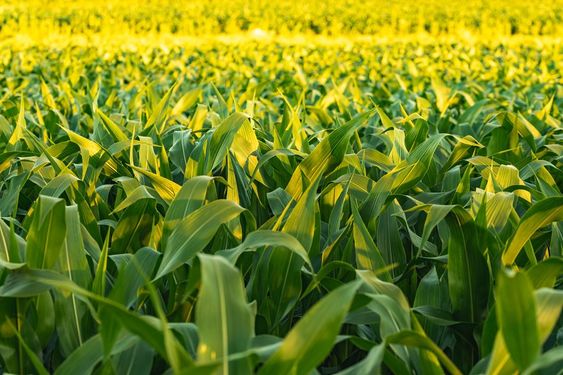Reaping the Rewards: Smart Corn Harvesting in the Age of Precision Agriculture
Corn Harvesting, a vital source of food and industrial products, is a cornerstone of global agriculture. However, maximizing corn yield and minimizing losses hinge on efficient harvesting practices. Enter smart agriculture, a revolutionary approach that leverages technology to optimize every stage of the farming process, including harvesting. This article delves into the world of smart corn harvesting, exploring the various technologies and their impact on the agricultural sector.
Contents
The Challenges of Traditional Corn Harvesting
Traditionally, corn harvesting relies heavily on manual labor and large machinery. While these methods have served agriculture for decades, they face limitations in today’s complex farming environment. Here are some key challenges:
- Labor Shortages: The agricultural sector faces a growing scarcity of skilled labor. Manual harvesting requires significant manpower, making it difficult for farms to maintain efficiency, especially during peak seasons.
- Inefficient Operations: Traditional harvesting methods can lead to grain loss due to improper timing, equipment limitations, and operator error. This translates to reduced yield and profits.
- Inconsistent Grain Quality: Achieving uniform grain quality is crucial for maximizing market value. Traditional methods often struggle with precise control over harvest time and handling, leading to variations in moisture content and kernel integrity.
- Environmental Impact: Extensive use of heavy machinery can negatively impact soil health through compaction. Additionally, inefficient fuel usage contributes to air pollution.
Smart Corn Harvesting: A Technological Revolution
Smart agriculture offers a solution to these challenges by integrating technology into the harvesting process. Here’s how:
- Precision Timing with Advanced Sensors: Sensors play a crucial role in smart harvesting. They are deployed in cornfields to measure various parameters like moisture content, kernel maturity, and weather conditions. This data allows farmers to pinpoint the optimal harvest window to ensure high-quality grain.
- Yield Mapping and Optimization: Yield mapping technology generates detailed maps of a field, indicating areas with higher or lower yields. This allows farmers to tailor harvesting strategies for each zone, maximizing overall yield and minimizing losses.
- Autonomous Harvesting with Smart Machines: The future of corn harvesting lies in autonomous machines. These intelligent combines utilize GPS technology and advanced sensors to navigate fields, adjust harvesting parameters on the fly, and minimize grain loss. Some machines even feature real-time grain quality analysis capabilities.
- Data-Driven Decision Making: By collecting and analyzing data throughout the harvest process, farmers gain valuable insights. This allows them to identify areas for improvement and make informed decisions regarding future planting, resource allocation, and overall farm management.
Benefits of Smart Corn Harvesting
The implementation of smart technologies offers numerous advantages to corn farmers:
- Increased Efficiency and Productivity: Smart harvesting streamlines operations, reducing reliance on manual labor and increasing efficiency. This allows farmers to harvest larger areas in less time, optimizing resource utilization.
- Improved Grain Quality: Precise control over harvest timing and handling techniques leads to higher-quality corn with consistent moisture content and fewer damaged kernels. This translates to higher market value and increased profitability.
- Reduced Operational Costs: Smart harvesting techniques minimize labor costs, fuel consumption, and grain loss, leading to significant cost reductions for farmers.
- Enhanced Environmental Sustainability: Precision technology allows for targeted application of resources, reducing reliance on heavy machinery and minimizing soil compaction. Data-driven strategies can also optimize irrigation, contributing to water conservation.
- Improved Farm Management: Data collected during smart harvesting provides valuable insights into field conditions, crop health, and overall farm productivity. Farmers can leverage this information to optimize future planting strategies and resource allocation.
The Road Ahead: Overcoming Challenges and Embracing Innovation
Despite the undeniable benefits, adoption of smart corn harvesting technologies faces some hurdles:
- Initial Investment: Implementing advanced sensors, yield mapping software, and autonomous machinery requires a significant initial investment. This can be a barrier for smaller farms or those with limited financial resources.
- Technical Expertise: Integrating and operating smart harvesting systems requires a certain level of technical expertise. Training programs and readily available technical support are crucial for facilitating wider adoption.
- Data Security Concerns: The use of connected devices and data collection raises concerns about cybersecurity. Farmers need assurances that their data is secure and will not be misused.
Addressing these challenges is key to unlocking the full potential of smart corn harvesting. Collaboration among government agencies, agricultural equipment manufacturers, and research institutions can pave the way for the development of more affordable and user-friendly technologies. Additionally, educational programs and technical support can empower farmers to embrace this transformative approach.
Conclusion: Reaping the Benefits of a Smart Future
Smart corn harvesting is not just a technological advancement; it’s a paradigm shift in agricultural practices. By leveraging data, automation, and precision technology, farmers can optimize their operations, improve grain quality, and ensure long-term sustainability. As the technology matures and becomes more accessible, smart harvesting will revolutionize the corn industry, leading to greater efficiency, profitability.




